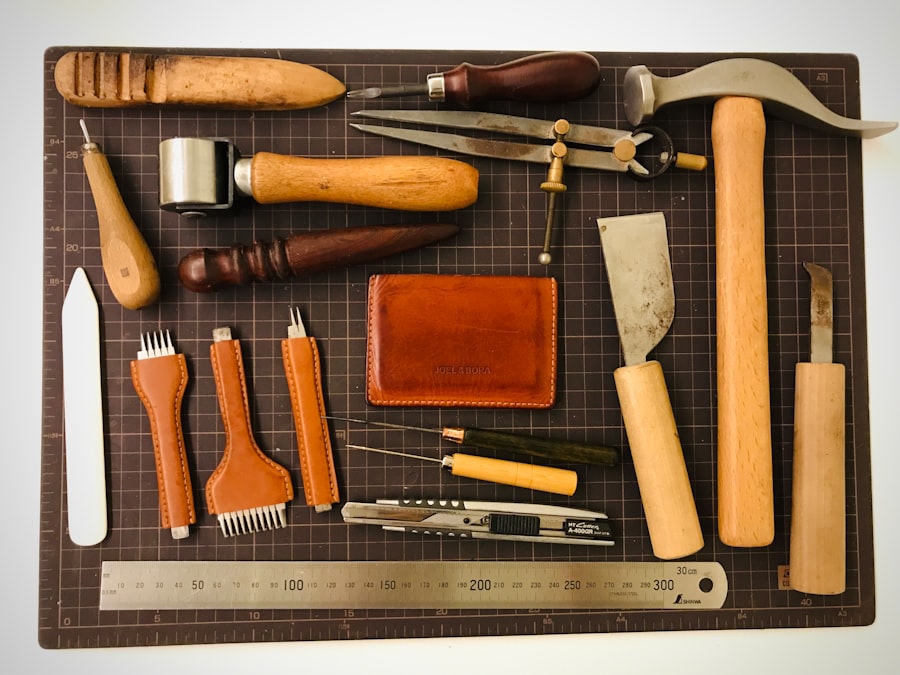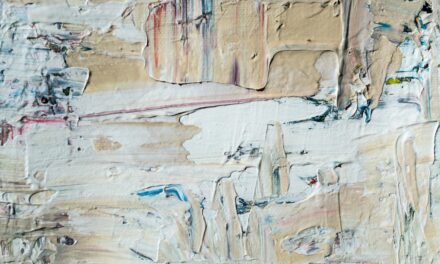Curation, in its essence, is the thoughtful selection and organisation of artworks, objects, or experiences to create a cohesive narrative or thematic exploration. It transcends mere arrangement; it is an art form in itself, requiring a deep understanding of the subject matter, an appreciation for aesthetics, and a keen insight into the audience’s perspective. The curator acts as a bridge between the artist’s intent and the viewer’s experience, crafting an environment where art can be appreciated in its full context.
This process involves not only the selection of pieces but also the consideration of how they interact with one another, the space they inhabit, and the stories they tell. In contemporary society, curation has expanded beyond traditional galleries and museums into various realms, including fashion, design, and even digital platforms. The role of the curator has evolved to encompass a broader range of responsibilities, from creating immersive experiences to engaging with diverse audiences.
As we navigate an increasingly complex visual culture, the art of curation becomes ever more significant, shaping our understanding of art and its place in our lives. It invites us to reflect on our values, our histories, and our connections to the world around us.
Summary
- Curation is the art of selecting and organizing items to create a meaningful and cohesive collection.
- Curated creations have a long history, dating back to the 17th century when cabinets of curiosities were popular.
- Curators play a crucial role in the art world, as they are responsible for selecting, interpreting, and presenting artworks to the public.
- In fashion and design, curated creations involve carefully selecting and arranging products to tell a story or evoke a specific mood.
- The digital age has revolutionized curation, allowing for virtual exhibitions and online collections to reach a global audience.
Curated Creations: A Brief History
The practice of curation can be traced back to ancient civilisations, where collections of artefacts were assembled to reflect cultural values and beliefs. In ancient Rome, for instance, wealthy citizens would curate their own collections of art and antiquities, showcasing their status and taste. However, it was during the Renaissance that curation began to take on a more formalised role within the context of public exhibitions.
The establishment of museums in Europe marked a significant turning point, as curators began to organise collections for public viewing, providing a platform for education and appreciation of art. As we moved into the 19th and 20th centuries, the role of the curator continued to evolve alongside artistic movements. The rise of modernism brought about new challenges and opportunities for curators, who were tasked with presenting avant-garde works that often defied traditional categorisation.
This period saw curators experimenting with thematic exhibitions that sought to engage audiences on a deeper level. The introduction of multimedia installations and performance art further expanded the boundaries of curation, allowing for innovative approaches that challenged conventional narratives and invited viewers to participate actively in the experience.
The Role of Curators in the Art World

Curators serve as vital intermediaries within the art world, wielding considerable influence over how artworks are perceived and understood. Their responsibilities extend beyond mere selection; they are tasked with conducting research, developing exhibition concepts, and engaging with artists to ensure that their visions are accurately represented. A successful curator must possess a nuanced understanding of art history and contemporary practices while also being attuned to current cultural trends and societal issues.
This multifaceted role requires a delicate balance between scholarly rigor and creative intuition. Moreover, curators play a crucial role in fostering dialogue between artists and audiences. They create spaces where conversations can flourish, encouraging viewers to engage with art on a personal level.
Through thoughtful programming and educational initiatives, curators can demystify complex concepts and invite diverse perspectives into the discourse surrounding art. In this way, they not only shape exhibitions but also contribute to the broader cultural landscape by promoting inclusivity and accessibility within the art world.
Curated Creations in Fashion and Design
The principles of curation have found a natural home within the realms of fashion and design, where the selection and presentation of items can significantly influence consumer perception. Fashion curators often draw upon historical references, cultural narratives, and contemporary trends to create collections that resonate with audiences on multiple levels. By thoughtfully curating runway shows or exhibitions in museums, they can highlight the artistry behind garments while also addressing broader themes such as sustainability or identity.
In design, curation plays a pivotal role in shaping environments that reflect specific aesthetics or philosophies. Interior designers often curate spaces by selecting furniture, artwork, and decor that harmonise with one another to create a cohesive atmosphere. This curated approach not only enhances the visual appeal of a space but also influences how individuals experience it.
The careful consideration of elements such as colour, texture, and form can evoke emotions and foster connections between people and their surroundings.
Curated Creations in the Digital Age
The advent of digital technology has revolutionised the way we engage with curated creations. Online platforms have emerged as powerful tools for curators to reach global audiences, allowing for unprecedented access to art and design. Virtual exhibitions enable viewers to explore collections from the comfort of their homes, breaking down geographical barriers that once limited access to cultural experiences.
This shift has prompted curators to rethink their strategies for engagement, embracing innovative formats that leverage multimedia elements to enhance storytelling. Social media has also transformed the landscape of curation by providing a platform for individuals to curate their own experiences. Users can create personal collections through carefully curated feeds that reflect their tastes and interests.
This democratization of curation allows for diverse voices to emerge, challenging traditional hierarchies within the art world. As a result, curators must adapt to this new paradigm by finding ways to connect with audiences who are increasingly accustomed to engaging with content on their own terms.
The Impact of Curated Creations on Consumer Behaviour

Curated creations have a profound impact on consumer behaviour, shaping not only what people buy but also how they perceive value in art and design. In an age where choices abound, consumers often seek guidance from curators who can distil complex information into curated selections that resonate with their preferences. This curated approach fosters trust and confidence in purchasing decisions, as consumers feel assured that they are investing in thoughtfully chosen items that reflect quality and authenticity.
Furthermore, curated experiences can enhance emotional connections between consumers and products. When items are presented within a carefully constructed narrative or thematic framework, they take on added significance beyond their functional value. This emotional resonance can drive consumer loyalty and encourage repeat engagement with brands or artists.
As such, curators play an essential role in shaping not only aesthetic preferences but also consumer identities within an increasingly competitive marketplace.
How to Curate Your Own Collection
Curating your own collection can be an enriching endeavour that allows you to express your individuality while surrounding yourself with pieces that resonate personally. The first step in this process is to define your vision or theme; consider what inspires you or what stories you wish to tell through your collection. This could range from a specific artistic movement to a focus on particular materials or colours.
By establishing a clear direction, you can begin to select pieces that align with your vision. Once you have defined your theme, it is essential to research potential additions to your collection thoroughly. Attend exhibitions, visit galleries, explore online platforms, and engage with artists directly if possible.
This exploration will not only deepen your understanding of different styles but also help you identify works that truly speak to you. As you curate your collection, consider how each piece interacts with others; think about balance, contrast, and harmony within your chosen space. Ultimately, your collection should reflect your unique perspective while inviting others into your world.
The Future of Curated Creations
As we look ahead, the future of curated creations appears both exciting and complex. The ongoing evolution of technology will undoubtedly continue to shape how we experience art and design. Virtual reality (VR) and augmented reality (AR) are poised to revolutionise curation by offering immersive experiences that allow viewers to engage with artworks in entirely new ways.
These technologies could enable curators to create dynamic environments where audiences can interact with pieces on a deeper level than ever before. Moreover, as societal values shift towards inclusivity and sustainability, curators will be challenged to reflect these changes within their practices. The demand for diverse representation in exhibitions will likely grow stronger as audiences seek out narratives that resonate with their own experiences.
Curators will need to embrace collaboration across disciplines and communities to create spaces that honour multiple perspectives while fostering meaningful dialogue. In conclusion, curation is an evolving art form that plays a crucial role in shaping our understanding of creativity across various domains. From its historical roots to its contemporary applications in fashion and digital spaces, curated creations continue to influence consumer behaviour while inviting personal expression through individual collections.
As we move forward into an increasingly interconnected world, the future of curation promises to be rich with possibilities for innovation and engagement.
Curated Creations offers a unique insight into the world of art curation, showcasing the best of artistic talent from around the globe. For those interested in exploring more about the art world, a fascinating article on The Wedding at Cana (1562-1563) by Paolo Veronese provides a detailed analysis of this iconic painting. This article delves into the historical context, artistic techniques, and symbolism behind Veronese’s masterpiece, offering a deeper understanding of the work. For art enthusiasts looking to expand their knowledge further, this article is a must-read.



